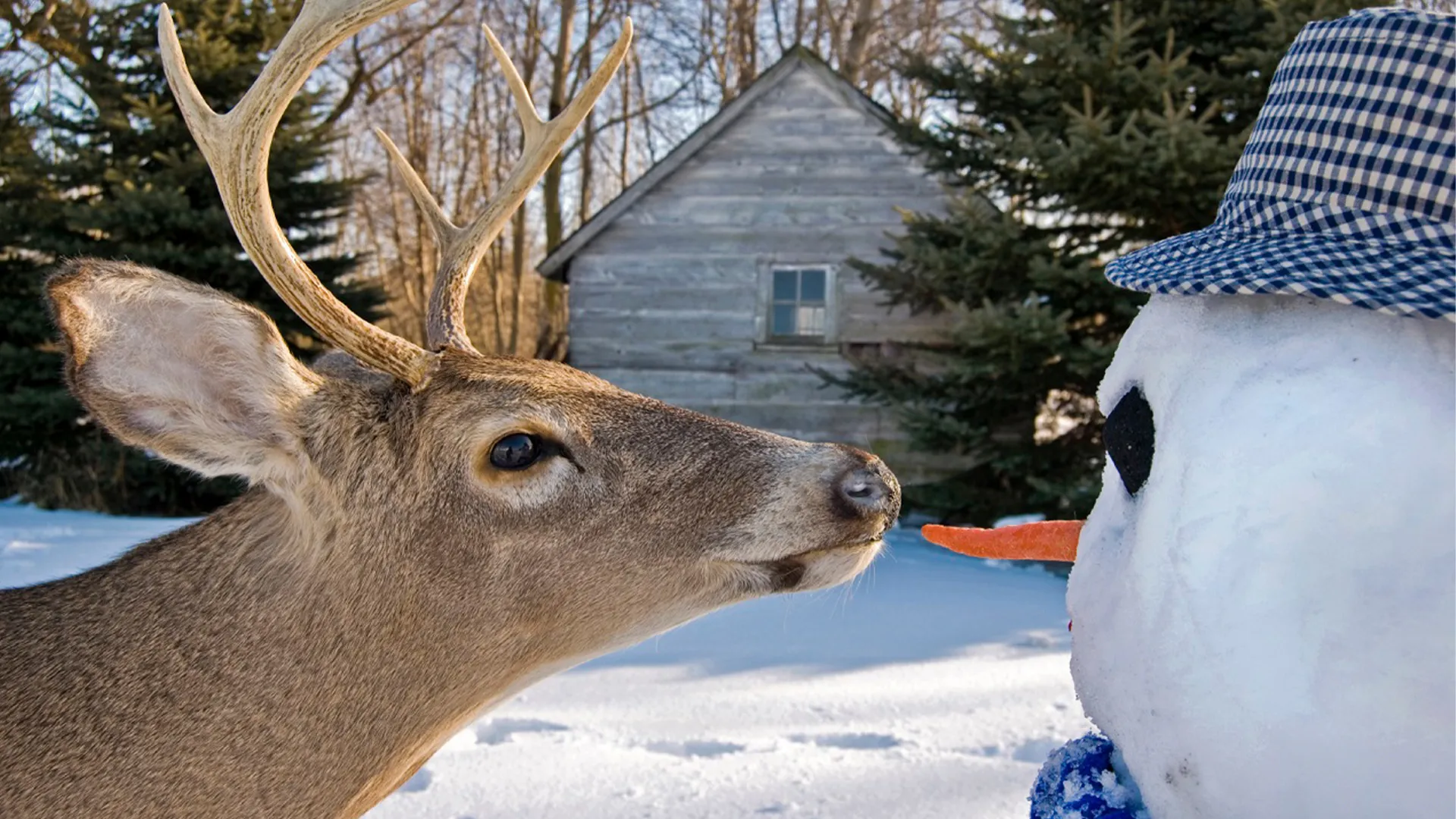Why Do Deer Love Your Garden?
Before jumping into repellents, it’s important to understand why deer are so attracted to your beautiful plants. Deer are herbivores, and many of the plants we love to grow—like roses, hostas, and tulips—happen to be their favorite snacks. In areas with high deer populations, natural food sources may be limited, especially in the colder months. Your well-tended garden offers a buffet that’s hard for them to resist.
Understanding this helps explain why deer are so persistent. They’re just looking for food!
Types of Deer Repellents
There are two main categories of deer repellents: scent-based and taste-based. Some people also prefer to use physical barriers, like fences, but we’ll focus on the repellent options here.
1. Scent-Based Deer Repellents
Deer have an acute sense of smell, and certain scents can send them running in the opposite direction. These repellents target the animal’s nose, making your garden less attractive to them.
Common Scent-Based Repellents:
- Predator Urine: Products containing coyote or fox urine trick deer into thinking a predator is nearby, making them too scared to stick around.
- Rotten Egg Mixture: A potent smell of sulfur from eggs can be unpleasant for deer (and sometimes for us, too!).
- Garlic: The strong odor of garlic can keep deer at bay.
- Soap Bars: Some gardeners swear by hanging soap bars in trees or bushes. Deer dislike the smell of strong-scented soaps, especially brands like Irish Spring.
2. Taste-Based Deer Repellents
Taste-based repellents rely on making the plants taste terrible to deer. These products are sprayed directly onto plants and can deter deer from munching away.
Popular Taste-Based Repellents:
- Capsaicin (Hot Pepper): The active ingredient in chili peppers can make plants too spicy for deer to handle.
- Bittering Agents: Some products add a bitter taste to plants, making them unappetizing.
- Commercial Deer Repellent Sprays: These sprays often combine foul smells and bad tastes to double the deterrent effect.
3. Homemade Deer Repellents
If you prefer a DIY approach, there are plenty of homemade recipes that can do the trick. A simple mixture of garlic, cayenne pepper, and water can serve as a powerful repellent. Or try making a concoction with rotten eggs and soap flakes. Just be prepared for some less-than-pleasant smells!
4. Physical Barriers as a Last Resort
While repellents can do wonders, sometimes it takes a bit more to protect your plants. If deer are relentless, consider setting up physical barriers like deer-proof fencing, netting, or even motion-activated sprinklers that give intruders a surprise shower.
How to Apply Deer Repellent Effectively
It’s not just about what repellent you use, but how you apply it. Here are some tips for maximizing the effectiveness of your deer-repelling strategy:
- Rotate Products: Deer are smart! If you use the same repellent repeatedly, they may become used to it. Rotate between different types to keep them guessing.
- Apply Regularly: Most repellents (especially homemade ones) need to be reapplied after rain or every few weeks.
- Cover the Perimeter: Instead of only spraying directly on plants, try covering the perimeter of your garden too. This way, deer won’t even want to get close.
- Start Early: Don’t wait until deer have already made your garden their dining room. Start using repellents as soon as you plant your garden for the season.
Do Deer Repellents Really Work?
The million-dollar question! In most cases, yes, deer repellents can be highly effective. However, it depends on various factors like the size of the deer population, the type of plants you have, and how hungry the deer are. During tough seasons like winter, deer may be more desperate and might ignore some repellents. But in general, these solutions offer a way to manage the problem without harming the animals or resorting to extreme measures.
Plants That Naturally Repel Deer
Another layer of defense is choosing plants that deer naturally avoid. While there’s no such thing as a completely deer-proof plant, there are many species that deer find less appealing. Here are a few:
- Lavender: Its strong scent is off-putting to deer.
- Daffodils: Toxic to deer, these flowers are generally left alone.
- Foxglove: Another plant that deer tend to avoid due to its toxicity.
- Thyme and Sage: These aromatic herbs can deter deer from entering your garden.
Consider planting a border of deer-resistant plants around the more vulnerable ones. This could help keep them out without relying solely on repellents.
Conclusion
Protecting your garden from deer doesn’t have to be an uphill battle. With a mix of the right repellents, smart planting strategies, and possibly even a barrier or two, you can deter these persistent creatures without compromising on your love for wildlife. And while it might take some trial and error to find what works best for you, there’s hope for your plants yet!
So, ready to take back control of your garden from those four-legged thieves?
FAQs:
1. How often should I reapply deer repellent?
Most repellents need to be reapplied every 2-3 weeks or after heavy rain. Always check the product’s instructions.
2. Are deer repellents harmful to other animals?
Most deer repellents are safe for other animals, especially if they’re natural or organic. However, always read labels carefully.
3. What’s the best time to start using deer repellent?
It’s best to start using deer repellents as soon as you plant your garden, rather than waiting for deer to arrive.
4. Do homemade deer repellents work as well as commercial ones?
Homemade repellents can be just as effective as store-bought options. However, you may need to apply them more frequently.
5. Can deer become immune to certain repellents?
Yes, deer can become accustomed to the same repellent over time, so it’s wise to rotate between different types for the best results.











